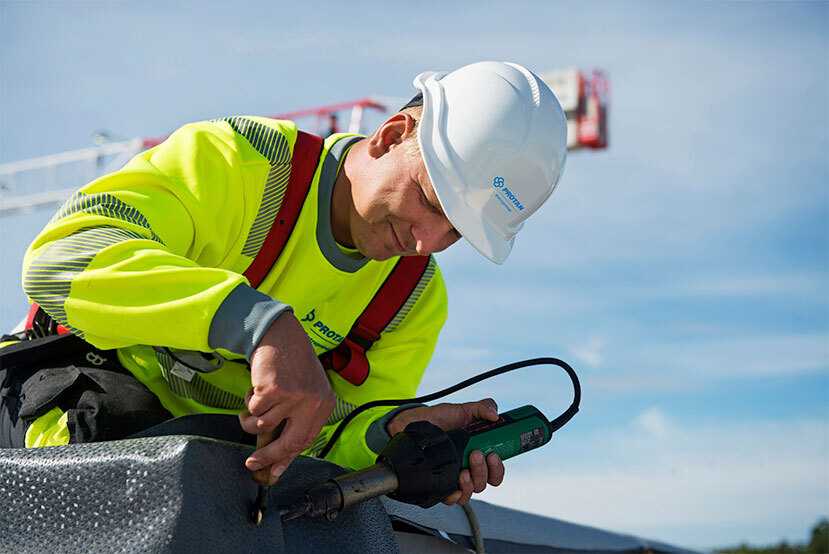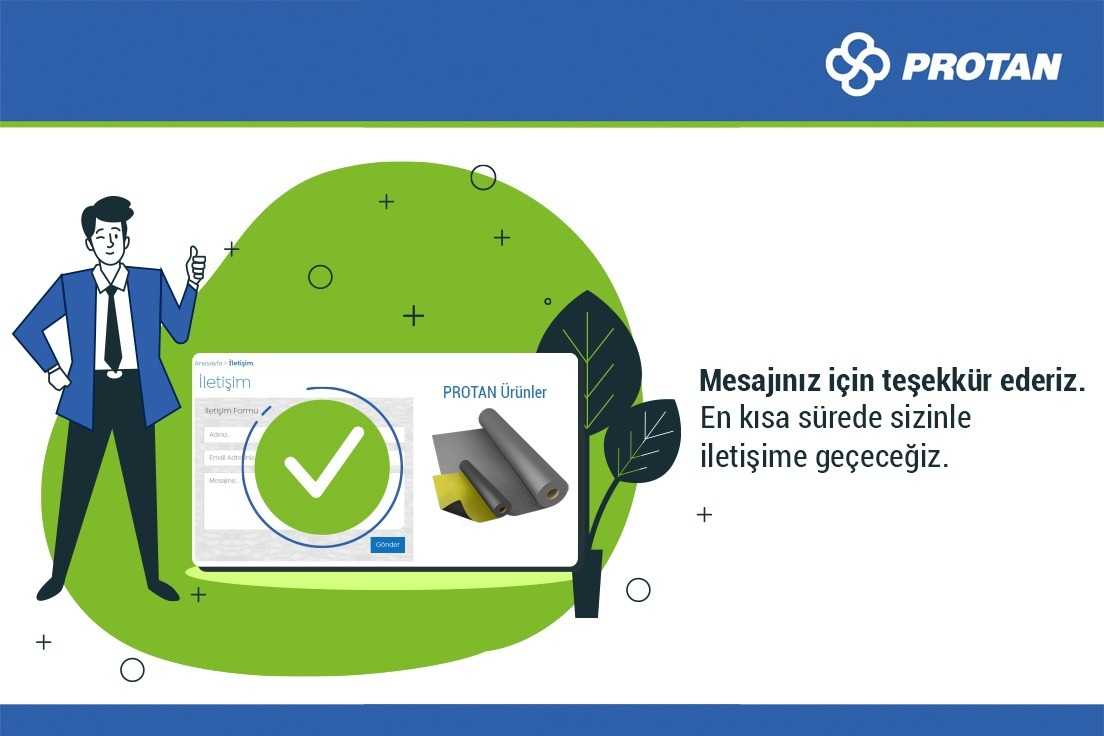What is Waterproofing?
Increasing the service life of structures; Applications made by coating concrete surfaces with various membrane products in order to make them resistant to abrasion, corrosion and leaks are called waterproofing. Within the scope of waterproofing applications, the protective layers and systems required to keep water under control and to prolong the age of the building, in its most general definition, are installed.
What Does Water Insulation Do?
Waterproofing; It is used to prevent problems that are seen as external threats such as rain, snow, groundwater, hail and soil moisture, as well as problems arising from toilets, kitchens and bathrooms, which are considered internal threats. Especially those living in houses with high humidity may face a number of health problems. For this reason, it is important to use quality products for healthier and safer buildings, to make insulation, to carry out regular maintenance and controls.
The usefulness of the building with waterproofing applications,
It is made to prevent rusting of irons and to prevent the reduction of carrying capacity. Since advanced water problems can lead to collapses and swellings, buildings can be made more reliable thanks to waterproofing.
What are Waterproofing Materials?
In order to fully ensure the safety and protection of buildings, waterproofing applications must be made with the use of the highest quality products. While synthetic and bituminous membrane covers are used for the cover part, bitumen, cement, polyurethane and acrylic based materials are used for the sliding part.
In the structural stage, which is the next stage of insulation applications, construction chemicals and joint materials are used. With the use of all these materials, the structure is completed and when it is ready for use, it is ensured that there are no problems with water.
How are Waterproofing Materials Used?
Synthetic materials (PVC, FPO-TPO) produced by Protan can be reused after heat treatment; Thermoset type materials (EPDM) cannot be reused with any process after their production.
Protan SE PVC covers; It is resistant to atmospheric conditions and sun rays. PVC-based waterproofing membranes with polyester carrier combined with hot air welding; It is used to provide waterproofing on light metal roofs, concrete roofs, garden terrace roofs.
Protan EX PVC covers; It is resistant to atmospheric conditions and sun rays. Proton EX PVC water membranes; It is polyester carrier, geotextile felt laminated and used primarily in panel production, light metal roofs, stream and parapet insulation and renovation applications.
Protan BA and Protan BAT PVC covers can be used in the foundation bundling of the buildings and in the waterproofing details that are covered. It is a non-UV resistant, carrier-free, homogeneous or PVC-based waterproofing membrane with signal layer.
Some criteria are taken into account when choosing waterproofing materials. In order to get the best efficiency when choosing the material, it is important that the selected materials are suitable for the amount of pedestrian traffic in the area where the waterproofing applications will be made.
Waterproofing materials vary according to the area of use, and it may not be possible for every material to perform correctly in every region where the application will be made. For this, it is necessary to analyze which materials should be used according to the area where the application will be made, and to know the technical properties of the materials to be used.
Waterproofing materials vary according to the type of surface to be applied. Some waterproof surfaces include mostly wood, brick and concrete. Depending on the type of material, it may be necessary to apply for various applications in order to maintain the thickness and durability of the material. Care should be taken to select environmentally friendly and non-toxic water insulation materials and applications in waterproofing applications to be made inside the house.
Although the foundations of the buildings are exposed to the pressure of groundwater, this problem cannot be avoided by only laying concrete. At the same time, complete waterproofing is required. Bundling method is used against water problems that may occur underground. By using the membrane layer, it is ensured that the entire foundation of the building is wrapped. Thus, water entry into the building is prevented. Synthetic membrane products used at this stage ensure that the life of the building is extended.
The waterproofing applied on roofs that are used and those that are not used differ from each other. In cases where the roof is used, waterproofing is done by using ceramic and similar building materials. Since only the final coating material will not be sufficient, water and heat insulation are used together. Thermal insulation provides serious support to waterproofing on days with snow and severe frost. Foam boards, stone and glass wool are used for thermal insulation, and bituminous or synthetic membrane products are used for waterproofing.
Wet floors such as bathrooms, kitchens and balconies are considered to be the surfaces where waterproofing should be done most carefully. By using cement-based materials in bathrooms and kitchens, it can be ensured that the insulation is strong and healthy. On surfaces that need to be filled with water up to a certain stage, it may be necessary to insulate certain parts of the walls.
Vapor barriers and air barriers should also be used for waterproofing to be applied on walls. Moisture insulation is another aspect of waterproofing, where masonry walls are constructed in a way that is known to be moisture resistant to prevent moisture from rising. Concrete in foundations; Moisture and waterproofing can be prevented with a liquid coating or basement waterproofing membrane.
What are the Types of Waterproofing?
Cement-based waterproofing is known as the easiest method to be applied in constructions. Cement-based waterproofing materials, which are extremely easy to mix and apply, are generally used in interior wet areas such as toilets and bathrooms. It is full or semi-flexible type waterproofing and is not exposed to sunlight and weather conditions since it is used in wet areas such as toilets and bathrooms.
Liquid waterproofing methods, which are one of the most ideal waterproofing materials; It is commonly applied with a primer coat and spray, roller and trowel, and is known as a thin coat consisting of two topcoats. Since it offers more flexibility than cement-based waterproofing types, it is preferred more intensely today.
Bituminous coating; It is used for waterproofing and flexible protective coating in accordance with the formulation and degree of polymerization. The most common applications of bituminous coatings, also called asphalt pavements, cover the areas under the screed. It is considered as an excellent protective coating and waterproofing material, especially on surfaces such as concrete foundations. The bituminous coating made by using bitumen-based materials should not be exposed to sunlight. It can become very brittle with prolonged exposure to sunlight unless modified with more flexible materials such as polyurethane or acrylic-based polymers. Obviously, the flexibility of bituminous materials always depends on the solid content of the polymer added to the bitumen.
Bituminous membrane waterproofing is the most commonly used method on low-pitched roofs due to its proven top performance. Bituminous waterproofing membrane contains asphalt, polymer and filler in the self-adhesive membrane. It may also be possible to add certain resins and oils to improve adhesion properties. Since the adhesion properties of the membrane may decrease over time, self-adhesive types have a lower shelf life.
The polyurethane liquid membrane waterproofing method is used for flat roof areas. It is an expensive method and has higher flexibility. Since polyurethane is extremely sensitive to moisture content, the moisture content of the concrete slab must be carefully evaluated prior to application. Otherwise, you may be faced with the problem of peeling or loosening the bonds of the membranes after a while.


